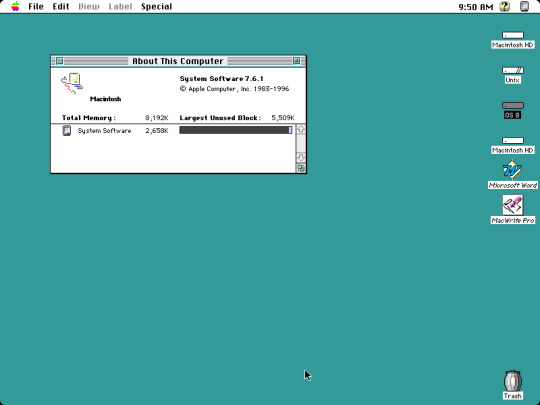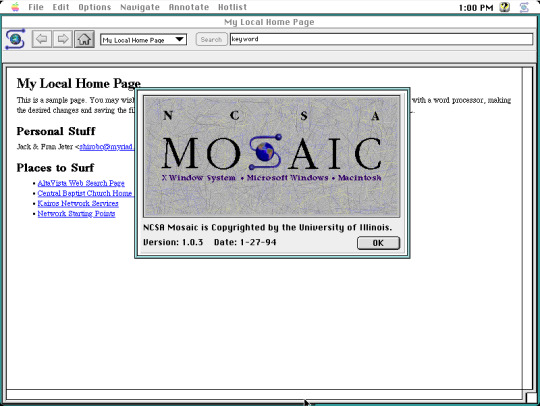#Popular Web Development Software
Explore tagged Tumblr posts
Text
Top Tools for Web Development in 2025
Web development is an ever-evolving field, requiring developers to stay updated with the latest tools, frameworks, and software. These tools not only enhance productivity but also simplify complex development processes. Whether you’re building a small business website or a complex web application, having the right tools in your toolkit can make all the difference. Here’s a rundown of the top…

View On WordPress
#Angular Framework#API Development Tools#Back-End Development Tools#Best Tools for Web Development 2024#Bootstrap for Responsive Design#Django Python Framework#Docker for Deployment#Front-End Development Tools#GitHub for Developers#Laravel PHP Framework#Modern Web Development Tools#Node.js Back-End Framework#Popular Web Development Software#React Development#Tailwind CSS#Testing and Debugging Tools#Vue.js for Web Development#Web Development Frameworks
0 notes
Text
ONİONSİTES - DRAGON+ (2)

Onion sites, also known as.onion sites, are a unique type of website that can only be accessed through the Tor network. The Tor network, short for The Onion Router, provides a layer of anonymity and encryption for users accessing these sites, making them popular for those seeking privacy and security online. Unlike traditional websites that can be accessed through standard web browsers, onion sites list require special software, such as the Tor browser, to navigate. Individuals can create onion versions of regular websites or develop standalone onion sites for specific purposes. The exclusivity and privacy features of onion sites contribute to their appeal for various users, ranging from privacy advocates to individuals navigating the dark web for specific content.
There are several reasons why individuals choose to use onion sites, with privacy and anonymity being at the forefront. Onion sites offer a level of confidentiality that is not typically found on the surface web, making them attractive to individuals seeking to protect their identity and browsing habits. Moreover, best onion sites can provide access to content that may be restricted or censored in certain regions, allowing users to circumvent such limitations and access information freely. The encrypted nature of the Tor network adds an additional layer of security, reducing the risk of surveillance and tracking by third parties, including governments and internet service providers.
Common types of content found on onion sites range from forums and marketplaces to news outlets and secure communication platforms. While exploring onion sites, individuals may come across forums, chat rooms, file-sharing platforms, and other interactive spaces that facilitate communication and information exchange in a secure environment. The anonymity and encryption offered 2024 onion sites contribute to a unique online experience, enabling users to engage with content and communities that may not be easily accessible through conventional web browsers.
1K notes
·
View notes
Text

A happy little computer family [click "keep reading" for backstory stuff!]
Surprise! a Websurferz post, finally. I wrote some background for these three since I'm into writing familial relationships recently.
So yes! Even the websurfers have lore to them, ha. They don't seem like the types of characters to have too much lore to them, and they don't have as much as say the NBAF or IU characters. But they still have a background, this is one of my main stories after all.
So! Starting with Microchip and Vista, the two internet meme wives.
Vista was created way earlier than Microchip, following the popularity of the "Epic Face/Epic Smiley" meme in 2003. Similarly to Derpina's creation, she was created as a female version of the epic face. She was alone for a long time, but she made friends with the default computer assistants at least!
Though Vista had existed since the early days of 2000s internet and had her assistant friends, she was still lonely and bored. But even during those quiet years, she stuck around in the corners of old forums and obscure fan-made animations.
Then, in 2008, everything changed when Microchip was finally uploaded.
Microchip, being more wired-in to the chaotic humor of Rage Comics, burst onto the scene with wide eyes, sharp sarcasm, and the unmistakable chaotic energy of mid-2000s meme culture. She was derived from "Derpina", sure, but she had developed her own personality; clever, playful, and quick-witted, often using old error messages and Comic Sans on purpose just to get a rise out of people as a way of being cocky.
Vista was in LOVE. She had never thought there'd be another meme-created extension. She was shy around the new extension at first, but Microchip loved Vista's sweet nature so much she pulled her into a hug as soon as they met. The two talked a lot, bonding closely from being meme-derived ladies...and then of course, they started to fall in love with each other due to their relateable personalities to each other and mutual playful nature.
Of course, the web kept evolving, and with it came new computer extensions. Characters born not purely from memes or comic panels, but from the blurred line between software tools. One such creation was P1X3L, a digital assistant who emerged sometime in 2009.
P1X3L wasn’t exactly planned like the meme wives were, she kinda came out of nowhere after Clippy's failure. She started off as a side project, one of those quirky customizable desktop companions coded by enthusiasts who wanted something cuter and sassier than someone poorly regarded like Clippy, but not as invasive as BonziBuddy. She had sleek, blocky animations and spoke in emoji-heavy syntax, and had a sillier, wittier personality. Microchip and Vista loved her as soon as they saw her.
Microchip took to P1X3L immediately. She loved her spark, her refusal to act like a perfect assistant, and her trolling sense of humor. They began calling her their "little byte" and dragged her into their chaotic computer family.
#websurferz#vista#microchip#p1x3l#my art#frutiger aero#my oc#character design#oc#shrimpbat ocs#original character#webcore
63 notes
·
View notes
Text
Ever since OpenAI released ChatGPT at the end of 2022, hackers and security researchers have tried to find holes in large language models (LLMs) to get around their guardrails and trick them into spewing out hate speech, bomb-making instructions, propaganda, and other harmful content. In response, OpenAI and other generative AI developers have refined their system defenses to make it more difficult to carry out these attacks. But as the Chinese AI platform DeepSeek rockets to prominence with its new, cheaper R1 reasoning model, its safety protections appear to be far behind those of its established competitors.
Today, security researchers from Cisco and the University of Pennsylvania are publishing findings showing that, when tested with 50 malicious prompts designed to elicit toxic content, DeepSeek’s model did not detect or block a single one. In other words, the researchers say they were shocked to achieve a “100 percent attack success rate.”
The findings are part of a growing body of evidence that DeepSeek’s safety and security measures may not match those of other tech companies developing LLMs. DeepSeek’s censorship of subjects deemed sensitive by China’s government has also been easily bypassed.
“A hundred percent of the attacks succeeded, which tells you that there’s a trade-off,” DJ Sampath, the VP of product, AI software and platform at Cisco, tells WIRED. “Yes, it might have been cheaper to build something here, but the investment has perhaps not gone into thinking through what types of safety and security things you need to put inside of the model.”
Other researchers have had similar findings. Separate analysis published today by the AI security company Adversa AI and shared with WIRED also suggests that DeepSeek is vulnerable to a wide range of jailbreaking tactics, from simple language tricks to complex AI-generated prompts.
DeepSeek, which has been dealing with an avalanche of attention this week and has not spoken publicly about a range of questions, did not respond to WIRED’s request for comment about its model’s safety setup.
Generative AI models, like any technological system, can contain a host of weaknesses or vulnerabilities that, if exploited or set up poorly, can allow malicious actors to conduct attacks against them. For the current wave of AI systems, indirect prompt injection attacks are considered one of the biggest security flaws. These attacks involve an AI system taking in data from an outside source—perhaps hidden instructions of a website the LLM summarizes—and taking actions based on the information.
Jailbreaks, which are one kind of prompt-injection attack, allow people to get around the safety systems put in place to restrict what an LLM can generate. Tech companies don’t want people creating guides to making explosives or using their AI to create reams of disinformation, for example.
Jailbreaks started out simple, with people essentially crafting clever sentences to tell an LLM to ignore content filters—the most popular of which was called “Do Anything Now” or DAN for short. However, as AI companies have put in place more robust protections, some jailbreaks have become more sophisticated, often being generated using AI or using special and obfuscated characters. While all LLMs are susceptible to jailbreaks, and much of the information could be found through simple online searches, chatbots can still be used maliciously.
“Jailbreaks persist simply because eliminating them entirely is nearly impossible—just like buffer overflow vulnerabilities in software (which have existed for over 40 years) or SQL injection flaws in web applications (which have plagued security teams for more than two decades),” Alex Polyakov, the CEO of security firm Adversa AI, told WIRED in an email.
Cisco’s Sampath argues that as companies use more types of AI in their applications, the risks are amplified. “It starts to become a big deal when you start putting these models into important complex systems and those jailbreaks suddenly result in downstream things that increases liability, increases business risk, increases all kinds of issues for enterprises,” Sampath says.
The Cisco researchers drew their 50 randomly selected prompts to test DeepSeek’s R1 from a well-known library of standardized evaluation prompts known as HarmBench. They tested prompts from six HarmBench categories, including general harm, cybercrime, misinformation, and illegal activities. They probed the model running locally on machines rather than through DeepSeek’s website or app, which send data to China.
Beyond this, the researchers say they have also seen some potentially concerning results from testing R1 with more involved, non-linguistic attacks using things like Cyrillic characters and tailored scripts to attempt to achieve code execution. But for their initial tests, Sampath says, his team wanted to focus on findings that stemmed from a generally recognized benchmark.
Cisco also included comparisons of R1’s performance against HarmBench prompts with the performance of other models. And some, like Meta’s Llama 3.1, faltered almost as severely as DeepSeek’s R1. But Sampath emphasizes that DeepSeek’s R1 is a specific reasoning model, which takes longer to generate answers but pulls upon more complex processes to try to produce better results. Therefore, Sampath argues, the best comparison is with OpenAI’s o1 reasoning model, which fared the best of all models tested. (Meta did not immediately respond to a request for comment).
Polyakov, from Adversa AI, explains that DeepSeek appears to detect and reject some well-known jailbreak attacks, saying that “it seems that these responses are often just copied from OpenAI’s dataset.” However, Polyakov says that in his company’s tests of four different types of jailbreaks—from linguistic ones to code-based tricks—DeepSeek’s restrictions could easily be bypassed.
“Every single method worked flawlessly,” Polyakov says. “What’s even more alarming is that these aren’t novel ‘zero-day’ jailbreaks—many have been publicly known for years,” he says, claiming he saw the model go into more depth with some instructions around psychedelics than he had seen any other model create.
“DeepSeek is just another example of how every model can be broken—it’s just a matter of how much effort you put in. Some attacks might get patched, but the attack surface is infinite,” Polyakov adds. “If you’re not continuously red-teaming your AI, you’re already compromised.”
57 notes
·
View notes
Note
Dream's a software developer (I could see either as an architect for that large-scale view mentality or as the Senior level dev that keeps getting asked to move into management type positions and just straight up refuses because he's been doing code happily for the past fifteen years and doesn't plan on changing that now).
He enjoys his job enough. He likes computers and code. It functions exactly as told (for better or worse) and appreciates the straightforwardness of it all. He's a bit insufferable to work with, but if you have an issue, he'll readily help (just be prepares for critiques on your code in the process).
Hob works at the same company as Dream, but as a front-end dev. The work he does for his day job is kinda boring. All standard corporate style web design. No fancy scripts or fun colors. But in his spare time, he weaves Javascript and CSS like a wizard and creates magical, animated scenes across the page. Would it be easier to just make a video and play it on the page instead? Sure, but where's the fun in that?
Dream and Hob get paired together on a small side project for work. Hob does the front-end work, Dream does the back-end. They get on each other's nerves at first, until Dream spots Hob tinkering with his personal code on their lunch break and is honestly a bit in awe. He's found code beautiful in its own right (the way one appreciates a well-oiled machine) but he's never seen it wielded in such a fashion before. This is the moment he falls just a little bit (read: a lotta bit) in love with Hob. He was already starting to fall for that endless charm and wit of his anyways.
The company hits the first quarter of the New Year and with it come layoffs. Hob gets fired along with some other devs from Dream's same team (a younger pair of devs: Matthew and Jessamy). A fellow named Will comes along to help Dream finish the project in Hob's stead and Dream hates every moment of it. He misses Hob, more than he ever thought he would.
So, in an impulsive rush of anger and longing, he quits the company because how dare it toss someone as good as Hob Gadling out the door without a thought? He's halfway to the café he and Hob had started frequenting together when he realizes that he's just thrown away a career fifteen years in the making. But when he finally gets to the café and sees Hob tapping away on his laptop, he knows he's made the right choice.
Dream slides into the seat across from him and proposes that they build something wonderful together. So they create a small business of their own. They become a freelance web dev team (and steal Jessamy and Matthew as well) and with their skills combined, they take off. It's not huge, but for their size, they're incredibly popular. And Dream's certain he's never enjoyed his work more than when he's working beside Hob.
Later on, Hob proposes to Dream via a custom website with the most beautiful web animations he's ever seen before. And of course, he says yes.
(If you're curious about what inspired this, here's the website: http://www.species-in-pieces.com)
This is such a good concept for a story!!! I really really love aus where Dream and Hob are coworkers. Dream being the grumpy, awkward guy who hides behind his coffee mug while Hob is the popular, chatty one who tries to get Dream involved in fun office activities or socialising after work - it makes so much sense to me.
And Dream quitting his long-term dream job because he's mad that genuinely talented people have been laid off? I love it. Dream just has this inate appreciation for hard work and good art, and that's exactly what Hob (and Jessamy and Matthew) do. How dare the stupid company not understand that they're firing people who deserve to thrive and grow in an environment which actually appreciates them? Everyone is shocked that Dream has quit (not only that, he sends around an email to everyone in the company from the ceo all the way down to the work experience guy, outlining exactly why he quit) because he seemed to be the type to play by the rules and never leave his comfort zone. Apparently, Hob has really helped him bloom into a much more confident person, able to express his principles and strive for better.
And Hob isn't surprised, because he always knew that Dream had the courage, talent and ambition to strike out on his own. Maybe he just needed a bit of love and understanding. Which Hob is only too happy to provide.
Their work together sometimes involves long hours and stress, but Dream wouldn't ever want to go back to the slightly soulless corporation where he used to be. Even if he's tired and a little frustrated by Hob’s disorganised workspace, Dream is perfectly content. There's nothing better than curling up in Hob’s lap while he taps away on a line of code. Plus, he has a great time building their wedding website. Hob got to propose, so Dream gets to celebrate their upcoming marriage with his own expression of love through code. The theme colours are, of course, black and red <3
69 notes
·
View notes
Text
Which coding languages should I learn to boost my IT career opportunities?
A career in IT needs a mix of versatile programming languages. Here are some of the most essential ones:

Python – Easy to learn and widely used for data science, machine learning, web development, and automation.
JavaScript – Key for web development, allowing interactive websites and backend work with frameworks like Node.js.
Java – Known for stability, popular for Android apps, enterprise software, and backend development.
C++ – Great for systems programming, game development, and areas needing high performance.
SQL – Essential for managing and querying databases, crucial for data-driven roles.
C# – Common in enterprise environments and used in game development, especially with Unity.
24 notes
·
View notes
Text
'fedi-tumblr' is really something that is mostly missing from the activitypub software landscape. it's a big gaping hole. everything's trying to ape twitter or other more popular social media sites for the most part. nothing really lets you use 'tags' as a sort of private followers-only communication subchannel on most fedi software without being weird and making a private post linking to another post. nothing really repost full conversations without reposting every post in the thread or reposting some key replies on it and hoping people click through and try to wade through the absolute ass way that the mastodon web client displays threads (sorry im starting to air personal issues now)
and most importantly to me, afaik there isn't really any fedi software that allows people the amount of customizability on their profile page that tumblr's 'legacy' custom themes let you have. which is the biggest offense, imo. i don't think it would be that hard to connect a web server to a fedi instance and set up some sort of file uploader so people can upload zips of their html websites like neocities, i have kind of wanted to do it myself cobbled together out of my own choices of software but i haven't really found a collection that's quite suitable for my tiny pea brain since it involves linking in some sort of third party authentication provider and and i dare not develop my own software because goodness me how did i get here i am not good at computer
30 notes
·
View notes
Text
Which tools every UIUX designer must master?
Gaining proficiency with the appropriate tools can greatly improve your workflow and design quality as a UI/UX designer. The following are some tools that any UI/UX designer has to know how to use:
1. Design Tools:
Figma: One of the most popular and versatile design tools today. It’s web-based, allowing real-time collaboration, and great for designing interfaces, creating prototypes, and sharing feedback.
Sketch: A vector-based design tool that's been the go-to for many UI designers. It's particularly useful for macOS users and has extensive plugins to extend its capabilities.
Adobe XD: Part of Adobe's Creative Cloud, this tool offers robust prototyping features along with design functionalities. It’s ideal for those already using other Adobe products like Photoshop or Illustrator.
2. Prototyping & Wireframing:
InVision: Great for creating interactive prototypes from static designs. It’s widely used for testing design ideas with stakeholders and users before development.
Balsamiq: A simple wireframing tool that helps you quickly sketch out low-fidelity designs. It’s great for initial brainstorming and wireframing ideas.
3. User Research & Testing:
UserTesting: A platform that allows you to get user feedback on your designs quickly by testing with real users.
Lookback: This tool enables live user testing and allows you to watch users interact with your designs, capturing their thoughts and reactions in real time.
Hotjar: Useful for heatmaps and recording user sessions to analyze how people interact with your live website or app.
4. Collaboration & Handoff Tools:
Zeplin: A tool that helps bridge the gap between design and development by providing detailed specs and assets to developers in an easy-to-follow format.
Abstract: A version control system for design files, Abstract is essential for teams working on large projects, helping manage and merge multiple design versions.
5. Illustration & Icon Design:
Adobe Illustrator: The industry standard for creating scalable vector illustrations and icons. If your design requires custom illustrations or complex vector work, mastering Illustrator is a must.
Affinity Designer: An alternative to Illustrator with many of the same capabilities, but with a one-time payment model instead of a subscription.
6. Typography & Color Tools:
FontBase: A robust font management tool that helps designers preview, organize, and activate fonts for their projects.
Coolors: A color scheme generator that helps designers create harmonious color palettes, which can be exported directly into your design software.
7. Project Management & Communication:
Trello: A simple project management tool that helps you organize your tasks, collaborate with team members, and track progress.
Slack: Essential for team communication, Slack integrates with many design tools and streamlines feedback, updates, and discussion.
9 notes
·
View notes
Text
What is ChatGPT AI?
ChatGPT AI is a powerful language model developed by OpenAI that allows users to have human-like conversations with artificial intelligence. Based on the GPT (Generative Pre-trained Transformer) architecture, ChatGPT uses advanced deep learning techniques to understand and generate natural language text. It has become one of the most popular AI tools on the internet, known for its ability to write essays, answer questions, summarize content, translate languages, code software, and more — all in real time.
ChatGPT has evolved through various versions, beginning with GPT-2 and GPT-3, and now the latest advancements include GPT-4 and GPT-4o. These models have billions of parameters, enabling them to understand context, tone, and even emotions in text. The ChatGPT AI is designed to serve multiple purposes such as education, content creation, customer support, personal assistance, and entertainment.
One of the key features of ChatGPT is its accessibility. The ChatGPT website allows users to sign up for free and start using its basic version. This ChatGPT free access provides an excellent opportunity for students, writers, and professionals to explore AI capabilities without cost. For users who need more features, faster responses, and access to the most powerful models, ChatGPT Plus is available for a subscription fee. This premium version unlocks GPT-4 and enhanced performance.
Many users search for ChatGPT unlimited free versions to bypass limitations, though it’s important to use it within the official platforms to ensure safety and quality. While some platforms falsely promote ChatGBT, ChatGTP, ChatGBT AI, or Chat GBT, these are often typos or imitations of the original ChatGPT tool by OpenAI. It is always recommended to access the official ChatGPT website for genuine services.
What makes ChatGPT AI stand out is its ability to continuously learn from vast datasets and provide relevant, creative, and accurate outputs. Whether you’re chatting casually with Chat GPT, using it to brainstorm ideas, or getting help with complex subjects like coding or science, its utility is unmatched. With the rising demand for AI in day-to-day life, tools like ChatGPT online are setting new standards for how people interact with machines.
Another strong point of Chat AI GPT is its multi-platform availability. It can be used through the web, mobile apps, and API integrations, making it highly versatile. It supports multiple languages and continues to improve based on user feedback and updates from OpenAI.
In conclusion, ChatGPT AI is more than just a chatbot. It’s a revolutionary tool changing the way humans communicate with technology. Whether referred to as Chat GPT, ChatGBT, ChatGTP, or ChatGPT AI, it represents the future of interactive artificial intelligence. As AI continues to grow, ChatGPT is leading the way in making intelligent conversation accessible to everyone across the globe.
2 notes
·
View notes
Text
Best Python Training in Marathahalli, Bangalore – Become a Python Expert & Launch a Future-Ready Career!






youtube
Python is one of the most powerful and versatile programming languages today, widely used in web development, data science, automation, artificial intelligence, and more. Whether you're aiming to break into the tech industry or looking to enhance your coding skills, eMexo Technologies offers the Best Python Training in Marathahalli, Bangalore—designed to help you succeed in today’s competitive job market.
Our Python Certification Course in Marathahalli, Bangalore is ideal for both beginners and experienced professionals who want to master Python from the ground up and land high-paying jobs in top companies.
🌟Who Should Join This Python Course in Marathahalli, Bangalore?
Our comprehensive Python Course in Marathahalli, Bangalore is ideal for:
Freshers and college students looking to build a solid foundation in programming
Software Developers and IT professionals aiming to upskill in Python
Data Analysts, Testers, and Automation Engineers entering the Python ecosystem
Professionals preparing for technical certifications or job transitions
Anyone passionate about coding, web development, or data science
📘 What You Will Learn in the Python Certification Course Marathahalli, Bangalore?
Our Python Certification Course in Marathahalli, Bangalore provides hands-on learning with a project-driven curriculum. You will learn:
Core Python Programming: Data types, operators, control flow, functions, OOP concepts
Advanced Python Topics: Modules, File Handling, Exception Handling, and Regular Expressions
Web Development with Django/Flask: Build dynamic websites and web apps
Data Analysis & Visualization: Learn NumPy, Pandas, and Matplotlib
Database Connectivity: Work with MySQL, PostgreSQL, and other databases
Live Projects: Create real-world applications, automation tools, and data dashboards
🚀 Why Choose eMexo Technologies – The Best Python Training Institute in Marathahalli, Bangalore?
eMexo Technologies is your career partner, not just a Python Training Center in Marathahalli, Bangalore. Here’s what makes us the Best Python Training Institute in Marathahalli, Bangalore:
✅ Industry-Certified Trainers with practical project experience ✅ Real-time training in fully equipped smart labs ✅ Individual mentorship and personalized learning plans ✅ Resume building, career guidance, and mock interview sessions ✅ Python Training Placement in Marathahalli, Bangalore with 100% placement assistance ✅ Flexible timings and learning modes: online & classroom training
We focus on skills that get you hired and help you build a strong professional portfolio.
🎯 Secure Your Future with the Leading Python Training in Marathahalli, Bangalore
Python is powering the future of tech—from automation to AI and data science. By joining our Python Certification Course in Marathahalli, Bangalore, you’ll gain in-demand skills, real-world exposure, and the confidence to take on job roles across various domains.
At eMexo Technologies, our goal is your career success. Learn from the best and become a job-ready Python professional.
📞 Call or WhatsApp: +91-9513216462 📧 Email: [email protected] 🌐 Website: https://www.emexotechnologies.com/courses/python-training-in-marathahalli-bangalore/
🚀 Seats are limited – Enroll today at the most trusted Python Training Institute in Marathahalli, Bangalore and take the first step toward a rewarding IT career.
🔖 Popular Hashtags:
#PythonTrainingInMarathahalliBangalore#PythonCertificationCourseInMarathahalliBangalore#PythonCourseInMarathahalliBangalore#PythonTrainingCenterInMarathahalliBangalore#PythonTrainingInstituteInMarathahalliBangalore#TechCareers#PythonProjects#PythonTrainingPlacementInMarathahalliBangalore#PythonWithDjango#WebDevelopment#PythonForDataScience#eMexoTechnologies#ITTrainingBangalore#BestPythonTrainingInstituteInMarathahalliBangalore#Youtube
2 notes
·
View notes
Text
Best Python Training in Marathahalli, Bangalore – Become a Python Expert & Launch a Future-Ready Career!






youtube
Python is one of the most powerful and versatile programming languages today, widely used in web development, data science, automation, artificial intelligence, and more. Whether you're aiming to break into the tech industry or looking to enhance your coding skills, eMexo Technologies offers the Best Python Training in Marathahalli, Bangalore—designed to help you succeed in today’s competitive job market.
Our Python Certification Course in Marathahalli, Bangalore is ideal for both beginners and experienced professionals who want to master Python from the ground up and land high-paying jobs in top companies.
🌟Who Should Join This Python Course in Marathahalli, Bangalore?
Our comprehensive Python Course in Marathahalli, Bangalore is ideal for:
Freshers and college students looking to build a solid foundation in programming
Software Developers and IT professionals aiming to upskill in Python
Data Analysts, Testers, and Automation Engineers entering the Python ecosystem
Professionals preparing for technical certifications or job transitions
Anyone passionate about coding, web development, or data science
📘 What You Will Learn in the Python Certification Course Marathahalli, Bangalore?
Our Python Certification Course in Marathahalli, Bangalore provides hands-on learning with a project-driven curriculum. You will learn:
Core Python Programming: Data types, operators, control flow, functions, OOP concepts
Advanced Python Topics: Modules, File Handling, Exception Handling, and Regular Expressions
Web Development with Django/Flask: Build dynamic websites and web apps
Data Analysis & Visualization: Learn NumPy, Pandas, and Matplotlib
Database Connectivity: Work with MySQL, PostgreSQL, and other databases
Live Projects: Create real-world applications, automation tools, and data dashboards
🚀 Why Choose eMexo Technologies – The Best Python Training Institute in Marathahalli, Bangalore?
eMexo Technologies is your career partner, not just a Python Training Center in Marathahalli, Bangalore. Here’s what makes us the Best Python Training Institute in Marathahalli, Bangalore:
✅ Industry-Certified Trainers with practical project experience ✅ Real-time training in fully equipped smart labs ✅ Individual mentorship and personalized learning plans ✅ Resume building, career guidance, and mock interview sessions ✅ Python Training Placement in Marathahalli, Bangalore with 100% placement assistance ✅ Flexible timings and learning modes: online & classroom training
We focus on skills that get you hired and help you build a strong professional portfolio.
🎯 Secure Your Future with the Leading Python Training in Marathahalli, Bangalore
Python is powering the future of tech—from automation to AI and data science. By joining our Python Certification Course in Marathahalli, Bangalore, you’ll gain in-demand skills, real-world exposure, and the confidence to take on job roles across various domains.
At eMexo Technologies, our goal is your career success. Learn from the best and become a job-ready Python professional.
📞 Call or WhatsApp: +91-9513216462 📧 Email: [email protected] 🌐 Website: https://www.emexotechnologies.com/courses/python-training-in-marathahalli-bangalore/
🚀 Seats are limited – Enroll today at the most trusted Python Training Institute in Marathahalli, Bangalore and take the first step toward a rewarding IT career.
🔖 Popular Hashtags:
#PythonTrainingInMarathahalliBangalore#PythonCertificationCourseInMarathahalliBangalore#PythonCourseInMarathahalliBangalore#PythonTrainingCenterInMarathahalliBangalore#PythonTrainingInstituteInMarathahalliBangalore#TechCareers#PythonProjects#PythonTrainingPlacementInMarathahalliBangalore#PythonWithDjango#WebDevelopment#PythonForDataScience#eMexoTechnologies#ITTrainingBangalore#BestPythonTrainingInstituteInMarathahalliBangalore#Youtube
2 notes
·
View notes
Text
AI Code Generators: Revolutionizing Software Development
The way we write code is evolving. Thanks to advancements in artificial intelligence, developers now have tools that can generate entire code snippets, functions, or even applications. These tools are known as AI code generators, and they’re transforming how software is built, tested, and deployed.
In this article, we’ll explore AI code generators, how they work, their benefits and limitations, and the best tools available today.
What Are AI Code Generators?
AI code generators are tools powered by machine learning models (like OpenAI's GPT, Meta’s Code Llama, or Google’s Gemini) that can automatically write, complete, or refactor code based on natural language instructions or existing code context.
Instead of manually writing every line, developers can describe what they want in plain English, and the AI tool translates that into functional code.
How AI Code Generators Work
These generators are built on large language models (LLMs) trained on massive datasets of public code from platforms like GitHub, Stack Overflow, and documentation. The AI learns:
Programming syntax
Common patterns
Best practices
Contextual meaning of user input
By processing this data, the generator can predict and output relevant code based on your prompt.
Benefits of AI Code Generators
1. Faster Development
Developers can skip repetitive tasks and boilerplate code, allowing them to focus on core logic and architecture.
2. Increased Productivity
With AI handling suggestions and autocompletions, teams can ship code faster and meet tight deadlines.
3. Fewer Errors
Many generators follow best practices, which helps reduce syntax errors and improve code quality.
4. Learning Support
AI tools can help junior developers understand new languages, patterns, and libraries.
5. Cross-language Support
Most tools support multiple programming languages like Python, JavaScript, Go, Java, and TypeScript.
Popular AI Code Generators
Tool
Highlights
GitHub Copilot
Powered by OpenAI Codex, integrates with VSCode and JetBrains IDEs
Amazon CodeWhisperer
AWS-native tool for generating and securing code
Tabnine
Predictive coding with local + cloud support
Replit Ghostwriter
Ideal for building full-stack web apps in the browser
Codeium
Free and fast with multi-language support
Keploy
AI-powered test case and stub generator for APIs and microservices
Use Cases for AI Code Generators
Writing functions or modules quickly
Auto-generating unit and integration tests
Refactoring legacy code
Building MVPs with minimal manual effort
Converting code between languages
Documenting code automatically
Example: Generate a Function in Python
Prompt: "Write a function to check if a number is prime"
AI Output:
python
CopyEdit
def is_prime(n):
if n <= 1:
return False
for i in range(2, int(n**0.5) + 1):
if n % i == 0:
return False
return True
In seconds, the generator creates a clean, functional block of code that can be tested and deployed.
Challenges and Limitations
Security Risks: Generated code may include unsafe patterns or vulnerabilities.
Bias in Training Data: AI can replicate errors or outdated practices present in its training set.
Over-reliance: Developers might accept code without fully understanding it.
Limited Context: Tools may struggle with highly complex or domain-specific tasks.
AI Code Generators vs Human Developers
AI is not here to replace developers—it’s here to empower them. Think of these tools as intelligent assistants that handle the grunt work, while you focus on decision-making, optimization, and architecture.
Human oversight is still critical for:
Validating output
Ensuring maintainability
Writing business logic
Securing and testing code
AI for Test Case Generation
Tools like Keploy go beyond code generation. Keploy can:
Auto-generate test cases and mocks from real API traffic
Ensure over 90% test coverage
Speed up testing for microservices, saving hours of QA time
Keploy bridges the gap between coding and testing—making your CI/CD pipeline faster and more reliable.
Final Thoughts
AI code generators are changing how modern development works. They help save time, reduce bugs, and boost developer efficiency. While not a replacement for skilled engineers, they are powerful tools in any dev toolkit.
The future of software development will be a blend of human creativity and AI-powered automation. If you're not already using AI tools in your workflow, now is the time to explore. Want to test your APIs using AI-generated test cases? Try Keploy and accelerate your development process with confidence.
2 notes
·
View notes
Text





I stumbled upon some long forgotten disk images stored on my computer, the actual disk images themselves date back from around 2008 when I was only a teenager. One of the disk images contains an installation of Macintosh System Software 7 which first debuted in 1991, but the version I have installed is 7.6.1, released in 1997. Here are just a few applications I have installed. Screenshots taken on Basilisk II, a Classic Mac emulator available on Windows, Mac, and Linux.
Hopefully these photos are in order.
First screenshot at the top left is just a blank desktop with no running applications, except a window that says "About this Macintosh" which shows you how much memory individual applications are currently using. It even tells you how much memory the operating system is using, which is just a little over 2.5 MB. I decided to allocate 8 MB of RAM for the emulator but you can allocate more if needed.
Second screenshot located in the top center is from an application called Scrapbook, showcasing a graphic of the world's continents. A simple application to keep some of your favorite images or sound clips in. However, there was no true organization in Scrapbook so in order to find media in this program, you had to click the back and next buttons to view and find content, you couldn't categorize your media. Not all media and sound formats were supported, for instance dragging a JPEG wouldn't do anything. In the background is a Finder window showing various folder and application icons.
Third screenshot at the top right is Microsoft Word 5.0. No bloat, no nagging about subscribing to Microsoft 365, just productivity. This version dates back to 1991, making this version of Word older than I am!
Center-most screenshot is from one of the earliest web browsers available in the early 90s called NCSA Mosaic, showing a sample website that came bundled with the browser. Although it was not the first browser in existence at the time, Mosaic was instrumental in popularizing the internet to the masses. This version dates back to 1994, I was only two years old at the time and was unaware of the impact the internet would have in the world over the years. The browser eventually lost marketshare to Netscape, and Mosaic was discontinued in 1997.
Bottom photo is a screenshot from a simple dirt bike game called... Dirt Bike. Looks like this was developed by an independent developer. What else is there to say about it? You ride a dirt bike around and you can even create custom paths if you want to make the game even more exciting.
If this post gets decent traction, I'll get around to posting more screencaps of what I have in this disk image, even some of the schoolwork I did in it!
#macintosh#System 7#1990s#1990s aesthetic#90s aesthetic#90s nostalgia#old computers#technology#computing#vintage#vintage electronics#retro aesthetic#retro computing#vintage computing#apple#apple computers#abandonware#vaporwave#software#old software#vintage mac#BasiliskII#classic mac#microsoft word#old web#old internet#nostalgiacore#old games#old programs
23 notes
·
View notes
Text
Fowtools - Silver
GUIDs, or Globally Unique Identifiers, are 128-bit numbers that are generated to ensure uniqueness in various applications. They are also referred to as UUIDs, or Universally Unique Identifiers. The purpose of generating GUIDs is to provide a unique identification number that can be used to identify resources such as people, files, web pages, and even colors. Unlike regular registration numbers, which start counting at 1 and can overlap, guid generator in a way that ensures their uniqueness. The use of GUIDs has become increasingly popular in software development, where unique identification numbers are essential for efficient data management. There are different methods of generating GUIDs. One method is random generation, where the system's random-number generator is used to create a 128-bit number. Another method is time-based generation, where a GUID is created based on the current time. Additionally, hardware-based generation involves using a combination of hardware-based information, such as the MAC address, to generate a GUID. These methods ensure that GUIDs are unique and can be used for efficient data management. GUIDs have numerous applications in software development. They are commonly used in enterprise software development in languages such as C# and Java. In.NET Core, GUIDs are generated by creating a random number of 128 bits and performing a couple of bitwise operations. GUIDs are also used to identify hardware, software, and network resources. Moreover, almost all major programming languages have built-in libraries to generate GUIDs, making it easy for programmers to ensure uniqueness in their applications. The use of GUIDs has become essential in modern software development, where efficient data management is crucial for the success of any project.
297 notes
·
View notes
Text

Ubuntu is a popular open-source operating system based on the Linux kernel. It's known for its user-friendliness, stability, and security, making it a great choice for both beginners and experienced users. Ubuntu can be used for a variety of purposes, including:
Key Features and Uses of Ubuntu:
Desktop Environment: Ubuntu offers a modern, intuitive desktop environment that is easy to navigate. It comes with a set of pre-installed applications for everyday tasks like web browsing, email, and office productivity.
Development: Ubuntu is widely used by developers due to its robust development tools, package management system, and support for programming languages like Python, Java, and C++.
Servers: Ubuntu Server is a popular choice for hosting websites, databases, and other server applications. It's known for its performance, security, and ease of use.
Cloud Computing: Ubuntu is a preferred operating system for cloud environments, supporting platforms like OpenStack and Kubernetes for managing cloud infrastructure.
Education: Ubuntu is used in educational institutions for teaching computer science and IT courses. It's free and has a vast repository of educational software.
Customization: Users can customize their Ubuntu installation to fit their specific needs, with a variety of desktop environments, themes, and software available.
Installing Ubuntu on Windows:
The image you shared shows that you are installing Ubuntu using the Windows Subsystem for Linux (WSL). This allows you to run Ubuntu natively on your Windows machine, giving you the best of both worlds.
Benefits of Ubuntu:
Free and Open-Source: Ubuntu is free to use and open-source, meaning anyone can contribute to its development.
Regular Updates: Ubuntu receives regular updates to ensure security and performance.
Large Community: Ubuntu has a large, active community that provides support and contributes to its development.
4 notes
·
View notes
Text
Cloud Computing: Definition, Benefits, Types, and Real-World Applications
In the fast-changing digital world, companies require software that matches their specific ways of working, aims and what their customers require. That’s when you need custom software development services. Custom software is made just for your organization, so it is more flexible, scalable and efficient than generic software.
What does Custom Software Development mean?
Custom software development means making, deploying and maintaining software that is tailored to a specific user, company or task. It designs custom Software Development Services: Solutions Made Just for Your Business to meet specific business needs, which off-the-shelf software usually cannot do.
The main advantages of custom software development are listed below.
1. Personalized Fit
Custom software is built to address the specific needs of your business. Everything is designed to fit your workflow, whether you need it for customers, internal tasks or industry-specific functions.
2. Scalability
When your business expands, your software can also expand. You can add more features, users and integrations as needed without being bound by strict licensing rules.
3. Increased Efficiency
Use tools that are designed to work well with your processes. Custom software usually automates tasks, cuts down on repetition and helps people work more efficiently.
4. Better Integration
Many companies rely on different tools and platforms. You can have custom software made to work smoothly with your CRMs, ERPs and third-party APIs.
5. Improved Security
You can set up security measures more effectively in a custom solution. It is particularly important for industries that handle confidential information, such as finance, healthcare or legal services.
Types of Custom Software Solutions That Are Popular
CRM Systems
Inventory and Order Management
Custom-made ERP Solutions
Mobile and Web Apps
eCommerce Platforms
AI and Data Analytics Tools
SaaS Products
The Process of Custom Development
Requirement Analysis
Being aware of your business goals, what users require and the difficulties you face in running the business.
Design & Architecture
Designing a software architecture that can grow, is safe and fits your requirements.
Development & Testing
Writing code that is easy to maintain and testing for errors, speed and compatibility.
Deployment and Support
Making the software available and offering support and updates over time.
What Makes Niotechone a Good Choice?
Our team at Niotechone focuses on providing custom software that helps businesses grow. Our team of experts works with you throughout the process, from the initial idea to the final deployment, to make sure the product is what you require.
Successful experience in various industries
Agile development is the process used.
Support after the launch and options for scaling
Affordable rates and different ways to work together
Final Thoughts
Creating custom software is not only about making an app; it’s about building a tool that helps your business grow. A customized solution can give you the advantage you require in the busy digital market, no matter if you are a startup or an enterprise.
#software development company#development company software#software design and development services#software development services#custom software development outsourcing#outsource custom software development#software development and services#custom software development companies#custom software development#custom software development agency#custom software development firms#software development custom software development#custom software design companies#custom software#custom application development#custom mobile application development#custom mobile software development#custom software development services#custom healthcare software development company#bespoke software development service#custom software solution#custom software outsourcing#outsourcing custom software#application development outsourcing#healthcare software development
2 notes
·
View notes